Phenylalanine
Table of Contents
My Thoughts
I use phenylalanine often as part of a nootropic stack, but rarely take it by itself. The few times I have was mostly out of curiosity and to get to know it a bit better. The supplement did what it was supposed to, but I felt the strength of the effects wasn't quite there for me. As much as it is possible to, I confirmed that by comparing notes with a few phenylalanine regulars who have mastered it down to a science.
I suspect I didn't have the dosage quite dialed in. And because I already had my nootropics regiment all figured out at the time, I didn't feel the need to investigate phenylalanine any further. That said, I will be taking a more serious second stab at it sometime soon. On paper and based on what I hear from my regular user friends, this supplement certainly deserves it. While it works great for me as part of a stack, apparently when you do figure out the proper dosage, it can be a force to be reckoned with.
What Is Phenylalanine
Phenylalanine is an essential amino acid, a nutrient that makes up protein. It is something your body is unable to produce and must get from external sources. These sources can be protein-rich foods like meat, fish, dairy and nuts. They can also be supplements.
As a supplement, phenylalanine comes in one of three forms: L-phenylalanine, D-phenylalanine or DL-phenylalanine.
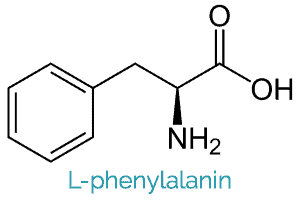
"L" is the natural form of the amino acid found in the high protein foods I mentioned. It boosts the production of several brain chemicals, including dopamine and norepinephrine. As a result, it can improve your mood and be an effective anti-depressant. It has also been proven to have positive effects on your attention span, motivation, and memory.
D-phenylalanine is a synthetic equivalent of the "L" version, a human-made mirror image. It has a different set of benefits. It affects how the brain and central nervous system respond to pain.
DL-phenylalanine is a 50/50 combination of the "L" and "D" forms. Also commonly called DLPA, it gives you the best of both worlds. By putting the two versions together, you get an anti-depressant that can get rid of your migraine or headache and can also do wonders for your cognitive abilities.
Of the three forms, choose the one that best suits your requirements. Typically, that would be either L-phenylalanine or DL-phenylalanine. Those are the two forms I use.
How Does It Work
When you take a phenylalanine supplement, it is first absorbed by your body through the intestines, and them partially processed by the liver. Once it enters the bloodstream, in makes its way up to the central nervous system. Being an electrically neutral amino acid, all three forms of phenylalanine can cross the blood-brain barrier with ease.
L-phenylalanine specifically is a precursor to a different, and rather powerful, amino acid called L-Tyrosine. In other words, it participates in the chemical reaction which produces L-Tyrosine. L-Tyrosine converts in the brain into L-DOPA, another amino acid, which itself is a precursor to dopamine, norepinephrine, and epinephrine (a.k.a. adrenaline). As you can see, it's quite the process.
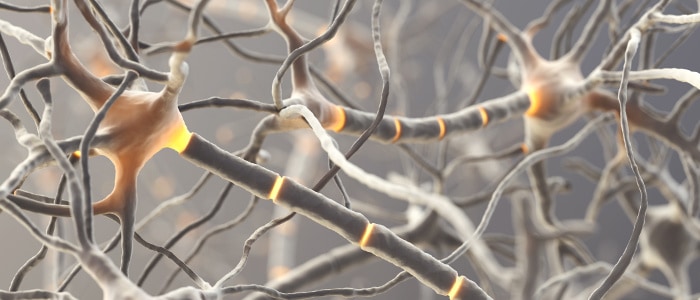
Dopamine is the feel-good neurotransmitter we all love. I do at least. By promoting its release, L-phenylalanine can improve your mood and decrease depression. A 1978 German study showed how after taking between 75 and 200 mg of DL-phenylalanine per day for 20 days, 60% of patients suffering from depression showed significant enough improvement that they were without any further treatment [1]. Another 20% had a moderate reduction in depression symptoms.
In addition to positive effects on your mood, dopamine is vital for memory, problem-solving and attention. It also helps your body control movement. For example, Parkinson's disease, the degenerative motor impairment condition, is caused by an overall lack of dopamine in the body.
Whatever dopamine the brain doesn't use up is converted into the neurotransmitters norepinephrine and adrenaline. The first is good for learning, attentiveness, and sleeping. Adrenaline drives your response to dangerous or stressful environments or situations.
D-phenylalanine, the synthetic equivalent of L-phenylalanine works quite differently. Instead of creating dopamine, it slows down the action of two enzymes: enkephalinase and endorphinase. Both of these enzymes degrade endorphins, and slowing them down has been shown to reduce pain [2].
Benefits and Effects
L-phenylalanine and DL-phenylalanine promote the creation of the neurotransmitters dopamine and epinephrine (adrenaline). Both of these chemicals are considered mechanisms for improving your mood, eliminating feelings of downness and reducing symptoms of anxiety and depression (and sometimes significantly so) [3]. The more dopamine and adrenaline you have, the better you feel.
Both adrenaline and dopamine are also huge when it comes to your ability to concentrate. In fact, the presence of these two chemicals is arguably the most important factor in improving your focus.
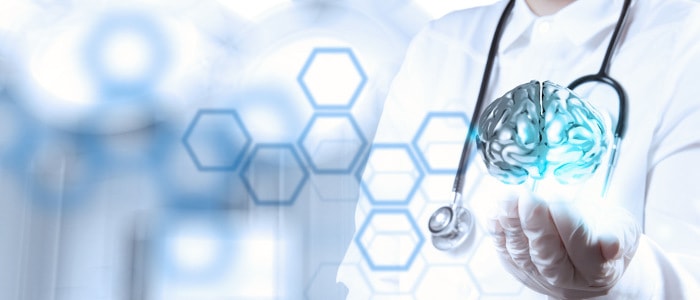
The "L" and "DL" types of phenylalanine can influence your learning ability and memory speed. They bind to glutamine AMPA receptors, as shown by a 1997 study published in the Journal of Medicinal Chemistry, which improves communication between brain synapses and makes learning and remembering easier and faster [4]. That said, if better memory and learning ability is your primary goal, I would argue you look into nootropics traditionally used for these purposes, like pramiracetam or the all mighty Noopept. You will typically get better results.
D-phenylalanine, and therefore by extension DL-phenylalanine, works as a very effective pain reliever, especially when it comes to migraines and headaches. As a slight aside, I find this to be a great feature of this supplement. Under normal circumstances, I use L-phenylalanine. But, if I ever feel like my head's about to explode, I just need to swap "L" for "DL" in my stack, and it's all rainbows and unicorns once again.
Besides headaches, D-phenylalanine is useful in treating many other types of pain. People suffering from anything like arthritis, back and neck pain to menstrual cramps have all reported positive results.
Stacking
Because L-phenylalanine is an amino acid, stacking it with Vitamin B6 and Vitamin C can be a good idea. This combination will help your body absorb it, making the process far more efficient.
Hordenine, a natural plant-based supplement, is also commonly used together with L-phenylalanine. It prevents the breakdown of the dopamine neurotransmitter, extending the duration of L-phenylalanine's effects. Because one supplement promotes dopamine release and the other inhibits its breakdown, you get a nice synergistic effect.
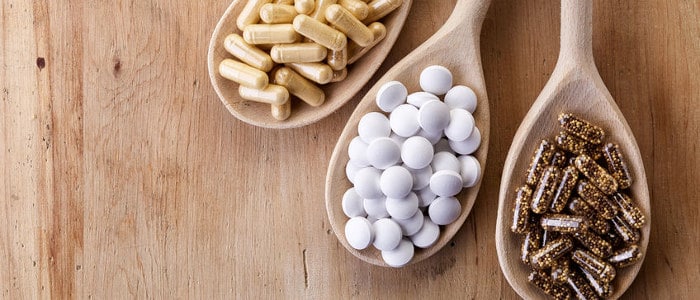
I like to stack L-phenylalanine and DL-phenylalanine with cognitive enhancers from the racetam family. I find both go well with pramiracetam, one of my go to supplements. Stacking with Noopept, one of the most popular nootropic supplements around, is also an excellent choice.
Dosage
As you may have already seen in the summary table at the top of this page, the dosage for phenylalanine is all over the place. It ranges from 750 all the way to 3000 mg total per day. Everyone has different tolerances and brain chemistries and depending on yours, anywhere in that range can be most beneficial.
You'll have to player around with the amount a bit to find what works best for you. When in doubt, start at the low end. The University of Maryland Medical Center recommends, based on research, a dosage of 14 mg per 1 kg (6.36 mg per 1 lb) for adults. That is a good initial stab at how much to take.
Ideally, split up your daily dosage into three. Take phenylalanine on an empty stomach, at least one hour before eating. Because it is an amino acid, this will maximize its absorption and prevent it from competing with other amino acids. Sneaking in some Vitamin B6 and Vitamin C will also help absorption.
Side Effects
Being completely non-toxic, phenylalanine is very well tolerated and for the most part side effects free. The few adverse effects I have heard of include headaches, nausea, and heartburn. However, these are rare, minor in nature and can also happen with virtually any other supplement.
A few people have complained rather vaguely of being too stimulated when taking phenylalanine. While I, of course, can't know for sure, I imagine this to be caused by personal tolerance levels and potentially too high of a dosage. Kind of like when you have too much coffee. Too stimulated sounds about right when I have one cup of joe too many.
On the more serious side, if you are currently taking any anti-depressants or anti-psychotic medication, you should stay clear of phenylalanine. It can interact negatively with certain classes of these meds, and especially with monoamine oxidase inhibitors. At the very least, have a good chat with your doctor first.
Where to Buy Phenylalanine
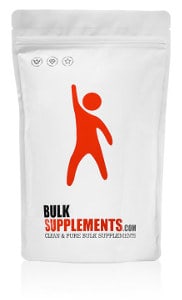
Phenylalanine is classified as a dietary supplement and legal to buy without a prescription. All three forms of it are available in powder and capsule formats.
Capsules range from 375 mg to 750 mg, with 500 mg being the most common option. But, because I currently only use phenylalanine for stacks, where precision is needed, I go for the powder.
Depending on how determined you are, you may be able to find L-phenylalanine and DL-phenylalanine at your local grocery or health food store. I have not seen D-phenylalanine on shelves anywhere, but then again, I don't use that variant, so I didn't necessarily try very hard.
As is the case with all my nootropics, I prefer to get this supplement online. It's just easier.
BulkSupplements is my go-to source for both L-phenylalanine and DL-phenylalanine powder. Their products are a popular choice across all nootropic communities. If you prefer to shop on Amazon, you can also get them there (though if you go through BulkSupplement's website you can get an extra 5% off by using the code SAVE5)
References

Leave a Reply